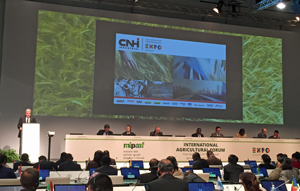 NCGA and more than a dozen other organizations met at the White House to discuss the role of the federal government in advancing sustainability in agriculture. Dr. Nick Goeser, a member of the Roundtable panel, highlighted NCGA’s participation in Field to Market, as well as the Soil Health Partnership programs.
NCGA and more than a dozen other organizations met at the White House to discuss the role of the federal government in advancing sustainability in agriculture. Dr. Nick Goeser, a member of the Roundtable panel, highlighted NCGA’s participation in Field to Market, as well as the Soil Health Partnership programs.
“Everyone across the ag supply chain has a role to play and a responsibility with conservation, but no one organization or company can do it alone,” said Goeser, who serves as director of the Soil Health Partnership. “We all must work together to understand the environmental impact at each point in the supply chain and adopt the best systems to reduce our environmental footprint.”
The Roundtable included representatives from the White House Council for Environmental Quality, USDA, and one of the President’s top advisors on environmental issues.









